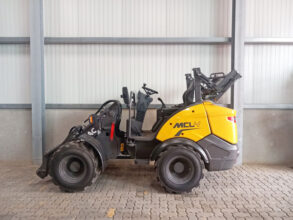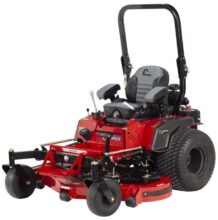Robotics today and tomorrow
Buying the benefit of robotic and autonomous mowers
By Glenn Hansen
As I write this, I’m looking at a text message from my son. “Dad, I’m taking the boys to the car show this afternoon on 7th St. Meet us there.” Meanwhile, if I don’t mow the grass (the grass I would have cut last night but for rain), it will be a couple more days before I can, and … you know. I’d mow right now but this article is already late; I need to get it done.
I could solve my time problem by purchasing a robotic lawn mower; I’d also eliminate a weekly task I hate.
Robotic mowers are expensive. As a homeowner, I would need to pay $2,000 or more for a decent one. That’s at least 3X what I paid for my walk-behind a few years ago, which I still might need for some trimming. For a landscape contractor, an auto-mowing robot would cost around $50,000, also 3X the cost of a typical commercial mower.
Return on robotics
For a pro contractor, “the ROI math is pretty simple and we can actually show it to them,” said Charles Quinn, founder of Greenzie, the software company whose technology enables Wright and others to offer autonomous zero-turn mowers. Quinn, better known as CBQ, gave the example of a Greenzie-equipped Wright Stander that costs $46,000, about a $30,000 premium over a non-robot Wright Stander. “Over a three-year period, that’s 10 grand a year for a robotic worker who will mow as much as you want. You can’t hire anybody for 10 grand a year.”
It’s not about firing workers currently on landscape crews; it’s about getting work done that landscape companies can’t currently hire for. “Labor availability is difficult, and the problem is not going away,” said Tim Kubista, VP of sales and marketing for RC Mowers, maker of autonomous mowing robots. “Many large landscape companies have full time staff just always looking for employees. Autonomy can replace those jobs. That’s the promise and it’s not difficult to use.”
Let me take a minute here to define robotics and autonomy. Robotics is the technology that enables a piece of equipment to perform a task, generally replacing a human – whether that’s a vacuum, a mower, or one of those flame-throwing robot dogs (Google it). Autonomy is the ability of a robot to act independently; some robots are semi-autonomous and require some human input. They’re all robots, from the small homeowner-type mower that stays on your lawn and cuts grass repeatedly, to the larger zero-turn mowers that get trailered to a location to mow under some level of semi-autonomous supervision.
Back to the story. ROI, “it can be a tricky question and a complicated answer,” said Jason Connor, director of commercial robotics for Husqvarna. “Businesses account for their work and people differently. This is about labor supplementation. A landscape company may have a head count budget of 10 people, but they can find only six to do the work today. I’ve been in this industry a long time; we never sit in meetings and talk about an abundance of people.”
“The ROI is a lot shorter than people think,” said Jake Vollbeer, national sales manager for Echo robotics. “Our robotic mower creates more value with current personnel resources, and with lower input costs – less water, less fertilizer, no gas.”
Still, “robots are not there to replace a worker,” said Benjamin Houssa, vice president of robotics for Echo. “You still need people nearby, still need a crew, and you still need a dealer close to the end user.”
Landscapers can measure the ROI in productivity. “When you don’t have a chance to weed flower beds because it rained or you’re short on staff and you fell behind, that’s your opportunity to use an autonomous mower,” said Steve Uljua, sr. outdoor robotics manager for Kress. “This can give you time to do more work, elevate your business and compete with unique products and better service.”
Better grass
I first heard the “better grass” story from a University of Georgia research scientist (and it’s easy to find similar documentation online) who showed that robotic mowers improve grass health. Through a months-long study, they cut side-by-side with regular mowers and robotic mowers. The robots “maintain” more than cut grass, making frequent passes that remove less of the leaf material. That practice reduces stress on the grass, and the smaller clippings more easily decompose back into the soil.
A landowner will also need to water less frequently. Uljua points to studies that show using robotic mowers can reduce water usage by 35%. That can be a big bonus in drier climates like the southwest. “But it’s not as big a deal on the East Coast,” said Uljua. “When I talk to those people, I point to university studies showing that your grass is just as good with less fertilization.”
Always improving
Robotic mowers are mechanical devices with wheels and motors and spinning blades; things will break and they’ll need service, just like on a traditional mower. Robots are also software-enabled devices that can be improved remotely. “We have users who say to us, ‘Wow the mower seems to be operating better and better,’” said Greenzie’s CBQ. “And we say, ‘Yes because every week you’re getting software updates.’ That’s been huge and the OEMs we work with are realizing they can put out this equipment and it will get better over time, not worse. That new trend will continue.”
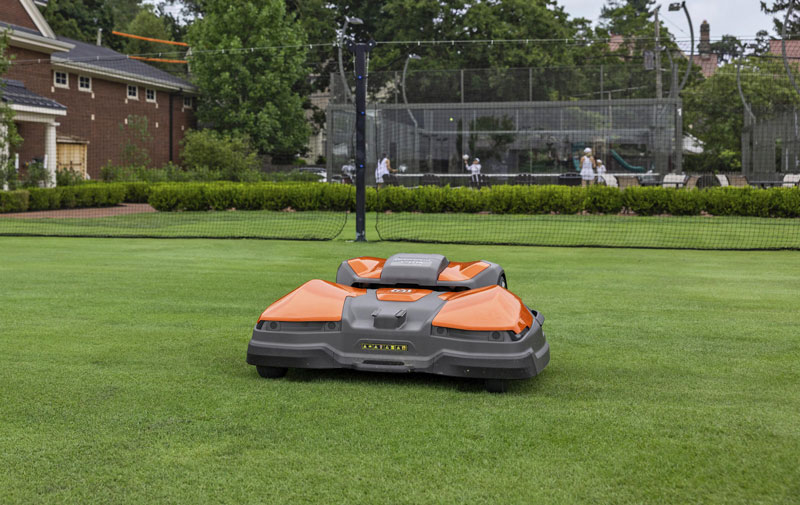

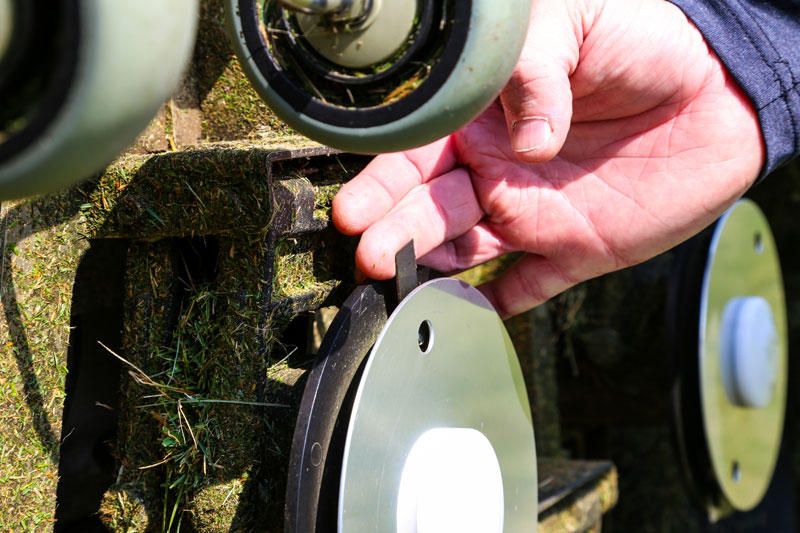
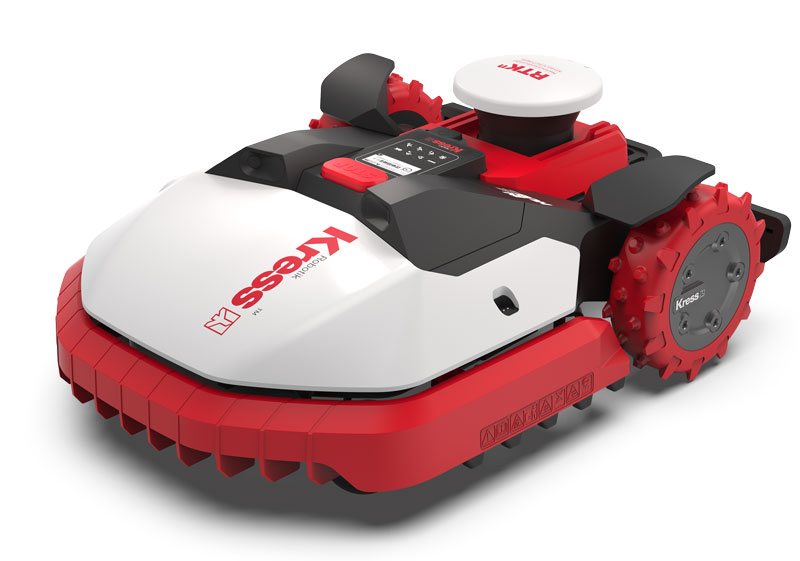
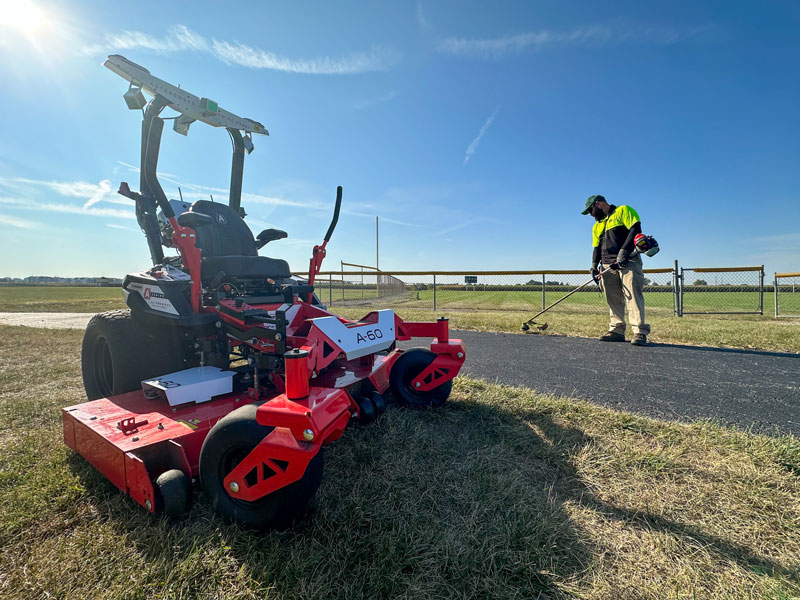

Tech advances – just getting started
While the idea of robots can be traced back to ancient Greece (can’t everything?), the word “robot” was made popular by Czech writer Karel Capek in his 1920 play R.U.R., and it comes from the Czech word “robota” meaning labor. Robot is a young word, etymologically speaking, and the technology is infantile and changing quickly. So is professional acceptance of it.
“I’ve gone from landscapers throwing things at me at the old GIE show in Louisville and telling me that I was the worst thing that’s ever happened to the landscape market to people begging me to help them with their problems with labor,” said Uljua from Kress. “Yeah, I’ve come a long way with robotics.”
The number of robotic products and manufacturers is growing rapidly. Buyers have a wide range of options and the technology is making big shifts, especially on the homeowner side. Even just a couple years ago, most of the smaller robot mowers operated within areas defined by boundary wires buried on the property. Today, real-time kinetic positioning (RTK) technology is taking over, with robot mowers communicating through satellites and some sort of signal device installed at the home or elsewhere.
While wire-free is all the buzz in robo circles, the technology is not perfect. Trees or other objects on the property can block signals. “Boundary wire still has some appeal,” said Connor of Husqvarna.
For pro users of mowers like the Greenzie-equipped Wright mower, evolving tech is increasing productivity. “In the beginning, the landscaper’s goal with the autonomous mower was just to get the job done,” said CBQ. “Now we’re getting requests like, ‘OK I have my sites mapped and I want to be able to take the mower off the truck and have it travel to the first job site through a transport zone and then go to the next one and go to the next one.’”
Kubista from RC Mowers has found that robot technology continues to surprise users. “They’re often surprised by how much control they have while the mower is running. They can change speed or overlap or other features. And one user can operate multiple autonomous robots simultaneously on the property.”
Safety is even more important than productivity for owners of robotic mowers. The robots have vision that lets them avoid humans, pets and any object that could get bumped or run over. Kress robots use ultrasonic technology to keep the mowers on the safe and intended mowing path. The ultrasonics can be turned on and off, depending on the area being maintained.
At the dealership
The process of buying autonomous power equipment is evolving too. “Initially, it was difficult to show these in dealerships,” said Vollbeer from Echo. “They’re difficult to demonstrate, and they’re not real sexy.” The large Echo robotic mower – the company also has golf-ball picking robots for driving ranges – is covered in gray plastic with little visual interest on the top side.
“And the sales process, like with any large piece of commercial equipment, is long. Especially with landscapers,” said Vollbeer. “This is a paradigm shift.”
Kubista agrees. He said, “Price is not the barrier anymore to someone looking at an autonomous mower. The barrier is, ‘Hey, I’m gonna let someone else experiment with that.” There are estimates of sales volume in the robotic mower space, and it’s a small number – maybe one-tenth of one percent of commercial mower sales? Not sure, but sales and usage are growing. CBQ reported that the operating hours of Greenzie-equipped autonomous mowers is growing rapidly, and he made the universal symbol for the “hockey stick” growth chart.
“The dealers that have adopted autonomous mowers and are going out and putting in the legwork, they’re becoming very successful,” said Uljua from Kress. He teased a little talk of what might be coming from Kress, though the company has not yet decided how much new product it will show at Equip Expo.
Husqvarna now offers a leasing option. “The buying cycle is shortening,” said Jason Connor. “And leasing will lessen the capital outlay.” Like all the manufacturers we spoke with – those making investments in and now delivering autonomous and semi-autonomous mowers – Husqvarna believes robotic mowers will take off in the U.S. like they have in Europe, for both homeowners and landscape pros.
“Homeowners might be more of the early adopters,” said Connor, ‘but the landscape industry is fiercely competitive. They will embrace these products so they can provide a greater level of service and quality in spite of the labor challenges.”
SIDEBAR: Robotic Lawn Mower Manufacturers
The robotic and autonomous marketplace is growing fast. In April, Stihl showed its updated iMow line for U.S. sales, and it has “limited regional availability.” Toro and Exmark have talked about autonomous products for some time but have not put anything in the sales channel yet (we did see a Toro robot mowing the grass at the company’s Minnesota HQ). And it seems like each week, a company with a name I don’t recognize drops a robot mower into an online marketplace. Here is a list of companies we know have robot mowers for sales.
- Wright Manufacturing
- Bobcat
- Echo
- Greenworks
- Husqvarna
- Kress
- Mammotion
- Mean Green
- RC Mowers
- Scag
- Scythe
- Segway
- Sunseeker



